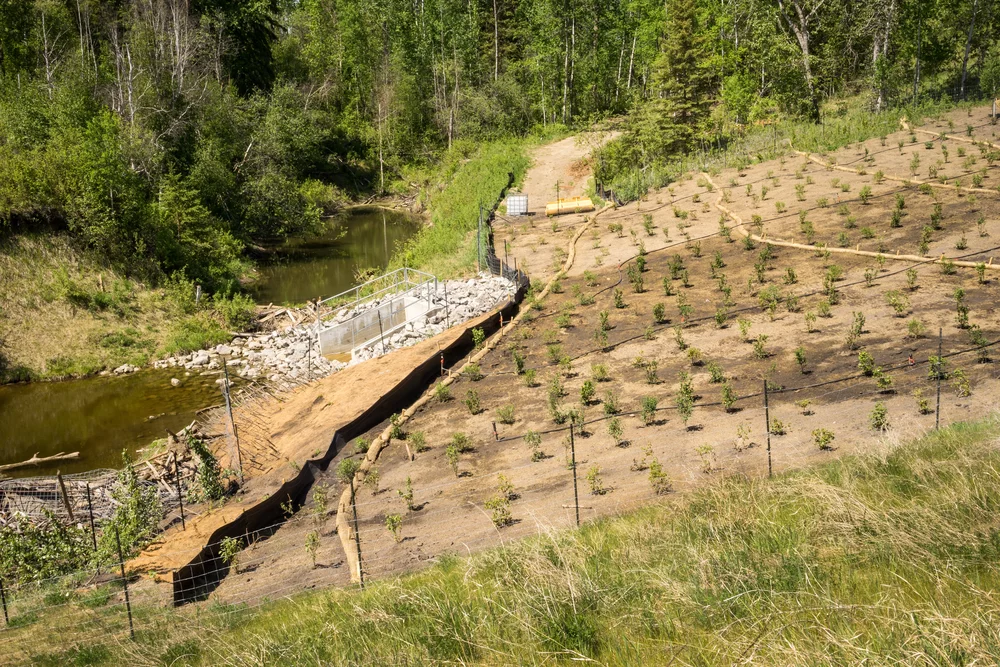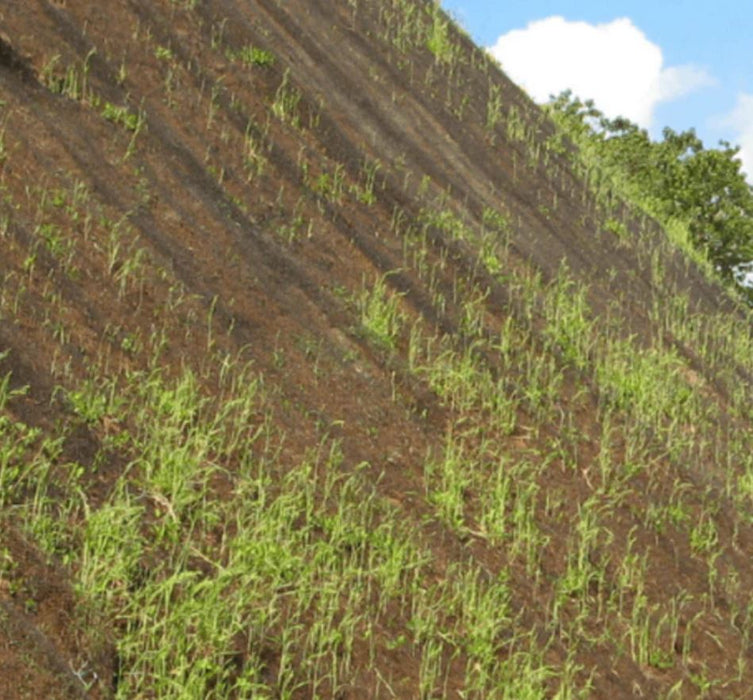Hydroseeding Solutions: A Greener Technique to Land Management
Wiki Article
Finest Practices for Erosion Control in Building And Construction Projects
Are you dealing with a construction job and worried concerning disintegration control? Look no more! In this article, we will lead you via the very best techniques for stopping erosion on your site. You'll uncover 5 crucial techniques, reliable sediment and overflow management techniques, essential factors to consider for slope stablizing, and suggestions for safeguarding greenery and soil. We'll additionally dive into the importance of implementing proper drainage systems. Prepare to take on disintegration head-on and guarantee the success of your building job.5 Crucial Erosion Control Strategies

To efficiently control erosion on your building and construction site, you'll require to apply important strategies such as incline stablizing and sediment control measures. Slope stablizing is important in avoiding soil disintegration on high slopes. Another efficient strategy is the use of disintegration control coverings or floor coverings, which are positioned on the slope and help preserve soil bits while enabling plant life to expand.
Efficient Sediment and Drainage Management

You can successfully handle debris and runoff in your building and construction project by applying appropriate erosion control steps. Another vital technique is the application of disintegration control blankets or floor coverings. By implementing these erosion control actions, you can efficiently manage sediment and runoff in your construction job, decreasing the effect on the environment and abiding with governing needs.
Trick Considerations for Slope Stablizing
You need to carefully analyze the slope's attributes, such as its drainage, structure, and angle patterns. Look for signs of disintegration, such as exposed origins, cracks, or slumping soil.When you have determined the unstable locations, you can start implementing actions to maintain the slope. One common technique is using preserving wall surfaces or terracing to create a series of level actions, which can assist distribute the weight and protect against additional erosion. One more choice is to plant plants on the slope, as the origins can help anchor the dirt and control erosion. Additionally, mounting erosion control coverings or floor coverings can provide prompt security while plant life comes to be well-known.
It's critical to routinely check the supported slopes to ensure their performance. Maintain an eye out for any signs of activity or disintegration, and take immediate activity if essential. Normal maintenance, such as examining and fixing any type of damaged actions, is also necessary to ensure long-term stability.
Ideal Practices for Plants and Dirt Security
One effective method to protect greenery and dirt on slopes is by routinely inspecting for indicators of erosion and taking prompt activity if required. Start by checking the slope for any indicators of erosion, such as revealed roots, bare dirt spots, or debris accumulation at the base. Implement disintegration control actions such as mounting disintegration control blankets, mulching, or even creating keeping wall surfaces if required.Implementing Appropriate Drainage Systems
To properly execute proper water drainage systems, it's vital to take into consideration the slope gradient and dirt kind. When it comes to taking care of water flow see this page and avoiding disintegration, understanding these variables is crucial. The incline gradient plays a significant duty in establishing just how water moves across the land. Steeper inclines can lead to quicker water circulation, raising the danger of erosion and flooding. On the various other hand, gentler slopes allow water to move much more slowly, decreasing disintegration potential. By evaluating the incline gradient, you can landscaping around patio develop a reliable drainage system that suits the all-natural water activity.Sandy soils tend to drain pipes faster due to their crude appearance, while clay dirts have a slower drainage price due to their portable nature. In addition, taking into consideration the dirt features assists avoid waterlogging, which can lead to bad plant development and damage to frameworks.
Conclusion
Finally, when it comes to erosion control in building jobs, you need to adhere to these finest techniques. Apply effective sediment and overflow monitoring strategies to avoid air pollution. Consider incline stabilization approaches to make certain the stability of the site. Shield vegetation and dirt by making use of ideal actions. Develop appropriate drainage systems to take care of water circulation (Memphis Erosion Control Solutions excavation). By adhering to these necessary techniques, you can successfully control erosion and make certain the success of your construction project.To successfully manage disintegration on your construction website, you'll need to carry out vital methods such as incline stabilization and debris control steps. Slope stablizing is vital in protecting against soil erosion on high inclines. One more effective strategy is the usage of disintegration control blankets or mats, which are positioned on the slope and aid keep dirt fragments while permitting vegetation to grow. One more option is to plant plants on the incline, as the origins can aid secure the soil and control disintegration. Implement erosion control actions such as setting up erosion control coverings, mulching, or even building preserving wall surfaces if washed river rock required.
Report this wiki page